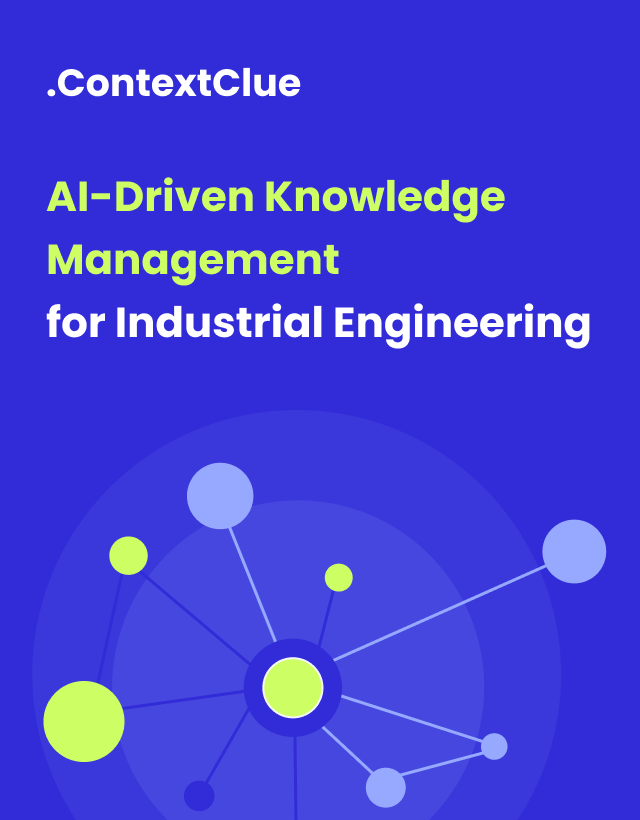
October 07, 2025
From Lab to Production: Mastering Enterprise Databricks Implementation
Author:

Reading time:
9 minutes
For many organizations, adopting Databricks begins with high expectations. The platform promises speed, scalability, and flexibility – seemingly the missing piece in a modern data strategy.
But the shine wears off quickly. Standing up clusters or rolling out notebooks is the easy part. The real challenge is turning experimental workflows into production systems that scale – without losing the agility that made Databricks attractive in the first place.
What separates the success stories from the stalled projects isn’t the feature set of the platform but how enterprises choose to implement it.
Across industries – finance, retail, manufacturing – the same lessons emerge.
The companies that thrive tackle three universal challenges:
- Separating experiments from production
- Bridging the gap between data science and DevOps
- Scaling pilots into enterprise-grade operations
The Implementation Challenge
It’s tempting to treat Databricks as just another tool in the stack. But platform deployment is only the beginning.
Unless organizations establish the right architecture and governance, Databricks’ openness can backfire – leading to fragile systems and mounting technical debt.
Databricks doesn’t solve governance on its own. Companies that rapidly spin up hundreds of notebooks without naming conventions, workspace taxonomy, or environment promotion protocols quickly run into trouble – unclear ownership, undocumented dependencies, no clear lineage from dev to production. The operating model must be designed with the same rigor as the technical infrastructure – and it must be in place before scale, not retrofitted after.
said Bartłomiej Grasza, MLOps Engineer at Addepto.
The hurdles are clear:
- Isolation – Developers need freedom to explore, but production demands stability and compliance. Without separation, the two collide.
- Skills – Data scientists rarely want to manage CI/CD pipelines, yet their work must be production-ready.
- Scale – Proofs of concept (PoC) that run smoothly on gigabytes often crumble when faced with petabytes.
Greenfield Builds: Getting It Right from the Start
Organizations starting fresh, the greenfield cases, have the advantage of a blank slate. The best among them establishes a rigorous environment isolation from day one.
This means not just separate compute clusters, but distinct workspaces, data domains, and access controls, usually backed by Unity Catalog. The benefit: experimental tweaks can’t contaminate production, and promotion pathways stay clear.
Another critical choice is data replication. Rather than exposing production datasets wholesale, smart teams replicate controlled slices into development and staging environments. This allows realistic testing without compliance headaches.
Bridging the gap between data scientists and engineering is just as important. Standardization is the winning formula. When notebooks, input/output formats, and artifacts follow conventions, promotion to production stops being hand-crafted. Add automated checks – data quality tests, performance benchmarks, business-logic gates – and the shift from experiment to production becomes a smooth glide path.
Modernizing Legacy Systems: The Harder Road
Greenfield builds are clean; legacy modernizations are messy. Success here depends less on bold design and more on disciplined assessment.
The most effective enterprises start with exhaustive audits: mapping lineage, cataloging dependencies, and scoring pipelines for complexity and technical debt.
This triage enables smart sequencing. High-value, low-complexity pipelines move first. Messier but critical ones wait until the foundations are strong. During the transition, many organizations run dual systems – Databricks pipelines alongside legacy ETL. This reduces risk and allows full validation before cutover.
The pain pays off. Moving from row-by-row ETL to Spark’s distributed computing often cuts processing times by 70-85%. Properly partitioned Delta Lake tables deliver 3-10x faster queries at lower storage costs. Add dynamic cluster management and intelligent scheduling, and the inefficiencies of legacy systems become untenable.
Governance and Data Quality: The Invisible Backbone
The shift from lab to production is not just about speed; it is about trust. Bad data undermines even the slickest architecture. The most resilient implementations therefore embed quality checks directly into pipelines.
Accuracy, completeness, and compliance are validated at every stage, with dashboards surfacing anomalies before they snowball into outages.
Unity Catalog has become the anchor of enterprise governance. Its effectiveness, however, depends on design. Catalogs organized by business domains, combined with bronze – silver – gold layering, balance discoverability with control. Dynamic, attribute-based access ensures permissions evolve with data maturity – avoiding the chokeholds of static access models.
In highly regulated environments, this governance becomes even more critical. Financial services organizations processing sensitive transaction data have found that Databricks’ native security features, combined with proper architectural patterns, can maintain the strict auditability requirements while enabling the rapid processing needed for real-time fraud detection.
The platform’s ability to enforce sequencing rules while maintaining performance has proven particularly valuable in scenarios where transaction order and timing are regulatory requirements.
The Advanced Frontier: MLOps and Production Readiness
As deployments mature, attention shifts to MLOps and multi-environment complexity. Forethought pays dividends here.
Integrating MLflow early makes model versioning and monitoring routine. Feature stores prevent teams from reinventing the wheel with each new initiative.
The challenge is bridging experimentation and deployment. Forward-thinking companies address this by building self-service MLOps platforms on top of Databricks. These platforms standardize deployment pipelines, creating seamless paths from notebook experiments to production-grade services.
The impact is measurable: development cycles that once took months can be compressed to weeks, while maintaining the reliability and monitoring that production systems demand. Teams report significant improvements in model deployment velocity and operational stability when proper MLOps foundations are established early in the Databricks journey.
The cloud landscape adds another wrinkle. Many enterprises now span multiple providers or hybrid on-premises setups. Federated governance and secure data-sharing patterns are essential to keep sensitive datasets protected while still exploiting cloud-scale analytics.
Measuring Success
Ultimately, the success of Databricks implementation is not measured in cluster efficiency but in business impact.
Key metrics include:
- Time-to-insight – Is ingestion-to-dashboard down from weeks to days, or days to hours?
- Productivity – Can teams promote work in days, not the usual 3–6 months?
- Reliability – Are pipeline failures, data issues, and SLA breaches decreasing?
- Agility – Can new analytics products launch in sprints rather than quarters?
Executives don’t care if you’re running the latest Delta Lake version. They care whether insights are delivered 50% faster, with >99% data accuracy, and with weekly deployments instead of quarterly ones. But here’s the point: those outcomes are impossible without the right foundations. CI/CD pipelines, ACID transactions, schema enforcement—technical excellence isn’t separate from business value, it’s the prerequisite.
said Marcin Marczyk, Delivery Director at Addepto.
The strongest organizations frame Databricks not as a technology upgrade but as a business enabler.
- Unity Catalog means faster, compliant data sharing.
- Medallion architecture means less prep time, more strategic analysis.
- Change management and training (30–40% of budgets) ensure adoption and real impact.
They connect technical health indicators (pipeline success rates, query percentiles, cost per workload) directly to business KPIs (faster launches, better forecasts, fraud detection).
The lesson is clear: technical sophistication and business outcomes are inseparable.
Optimizing Platform Economics: Making Performance Sustainable
Business impact means nothing if it comes at unsustainable cost. Databricks’ power is real, but also pricey and without disciplined cost management, organizations can find themselves spending six or seven figures monthly while using a fraction of the platform’s capacity.
The best organizations treat DBU consumption as a managed resource, not an unlimited one. Cost governance begins on day one.
Rightsizing Compute: The Biggest Lever
Cluster sizing drives most Databricks costs. Many teams over-provision for peak loads, then run at 20% utilization.
A financial services firm cut monthly spend by 38% after auditing cluster usage: 40% of jobs were running on clusters too large, and 30% of dev clusters were left running overnight.
Effective strategies include:
- Job-specific cluster policies to prevent over-provisioning
- Autoscaling tuned to workload patterns
- Spot instances for non-critical jobs (one retailer saved $80K/month)
- Serverless compute for SQL and low-frequency workloads
Storage Optimization: Small Changes, Big Impact
Delta Lake flexibility can become a cost trap. Without upkeep, storage bloats and queries slow down.
Best practices:
- Regular OPTIMIZE and VACUUM (one manufacturer cut storage 45%, improved speed 3x)
- Z-ordering or liquid clustering for high-query tables
- Archiving cold data to cheaper tiers
- Monitoring small file proliferation in streaming workloads
Governance as Economic Control
Unity Catalog isn’t just about security – it’s about accountability.
Smart teams use:
- Workspace chargebacks to business units
- Budget alerts and throttling
- Idle resource detection (terminate clusters inactive 15–30 minutes)
- License audits to right-size feature adoption
Some firms even run quarterly cost optimization sprints, trimming waste while increasing usage.
Feature Adoption Discipline
Every feature has a cost – whether in licensing, complexity, or learning curve. Strategic adopters:
- Start with core (Spark, Delta, notebooks) and expand only with clear ROI
- Weigh build-vs-buy for MLOps
- Avoid expensive “all-purpose” clusters
- Measure utilization before expanding licenses
Real Cost-to-Value Metrics
Alongside business outcomes, leaders track economic efficiency:
- Cost per insight delivered
- Cost per model deployed
- DBU per TB processed
- Cost avoidance through optimization
One financial services firm discovered a fraud detection model was eating 40% of platform spend. A two-week optimization cut costs by 65% with no accuracy loss.
The Bottom Line
Databricks ROI isn’t automatic, it’s engineered. Organizations maximize value by combining technical governance with cost discipline. The goal isn’t minimizing spend, but maximizing value per dollar.

Addepto Case Studies: Proven Databricks Expertise
- Optimizing Aircraft Turnaround with Practical AI
Addepto built a Databricks-based platform to process streaming airport data in real time. Ground crews gained an intuitive dashboard for stand availability, improving turnaround accuracy and operational efficiency. (Read case study)
- Real-Time Fraud Detection for Renewable Energy Certificates
Addepto modernized fraud detection with Databricks. The system processes transactions at scale while enforcing strict sequencing and auditability, meeting regulatory needs without sacrificing speed. (Read case study)
- Implementing an MLOps Platform for Seamless Deployment
Addepto delivered a standardized, self-service MLOps platform on Databricks. Development cycles shrank from months to weeks while maintaining reliability and monitoring. (Read case study)

The Path Forward: Choosing the Right Partner
The difference between thriving and stalled implementations often comes down to expertise – not just technical, but domain-specific.
The best partners know how to balance agility with governance, solve the MLOps challenge across industries, and make complex streaming architectures simple for end users. They bring proven patterns that reduce risk and accelerate value.
Conclusion
Mastering Databricks isn’t just about deploying the platform. It’s about architecting the organization around it.
Enterprises that balance freedom with control, bridge skills gaps, scale deliberately, and manage costs strategically turn the promise of data science into production-grade reality.
The journey from lab notebooks to enterprise analytics is rarely smooth. But the payoff is profound: faster insights, higher data confidence, and the agility to outpace competitors.
Those who invest in the right foundations – technical excellence, organizational readiness, and cost discipline – and work with experienced partners discover that Databricks is not just a platform. It’s a lever for transformation.
Category:






